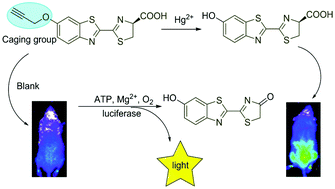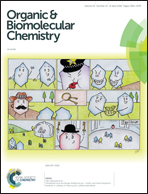Visualization of mercury(ii) accumulation in vivo using bioluminescence imaging with a highly selective probe†
Abstract
Mercury is a highly toxic environmental pollutant that negatively affects human health. Thus, an in vivo method for noninvasive imaging of mercury(II) and visualization of its accumulation within living systems would be advantageous. Herein, we describe a reaction-based bioluminescent probe for detection of mercury(II) in vitro and accumulation in vivo. The application of this probe would help to shed light on the intricate contributions of mercury(II) to various physiological and pathological processes.



 Please wait while we load your content...
Please wait while we load your content...